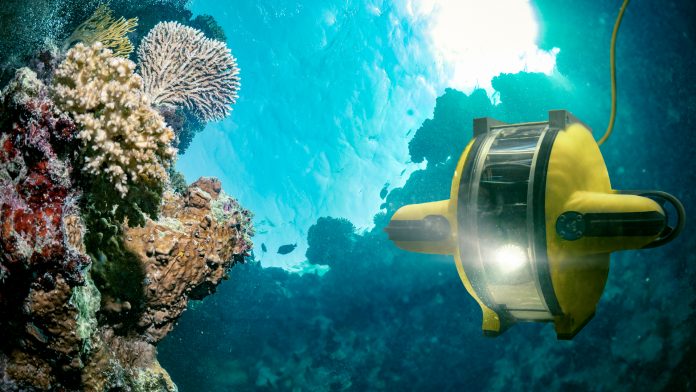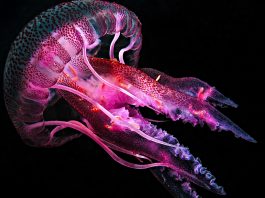The development of an underwater robot has enhanced researchers’ knowledge of the immense mid-ocean region dubbed the “twilight zone.”
The innovative underwater robot technology manufactured by scientists and engineers from the Woods Hole Oceanographic Institution (WHOI), the Monterey Bay Aquarium Research Institute (MBARI), and Stanford University is named Mesobot and has provided scientists with a more comprehensive perspective of the enigmatic twilight zone.
Their research is published in Science Robotics.
The Mesobot underwater robot is proficient in tracking and recording high-resolution images of fragile and slow-moving zooplankton, particles, and gelatinous animals, empowering scientists to examine species in their mesopelagic habitat without intrusive disturbance. This knowledge can potentially aid in understanding the role that these organisms play in CO2 transportation from the depths of the sea into the atmosphere and how commercial fishing affects marine ecosystems.
Dana Yoerger, a senior scientist from the WHOI, said: “Mesobot was conceived to complement and fill important gaps not served by existing technologies and platforms. We expect that Mesobot will emerge as a vital tool for observing midwater organisms for extended periods and rapidly identifying species observed from vessel biosonars. Because Mesobot can survey, track, and record compelling imagery, we hope to reveal previously unknown behaviours, species interactions, morphological structures, and the use of bioluminescence.”
The Mesobot successfully tracked two gelatinous marine creatures autonomously in the Monterey Bay area in 2019, attaining a high-definition video of a dinnerplate jellyfish, in which it rammed a siphonophore that scarcely avoided the creature’s venomous tentacles. Additionally, the underwater robot also recorded a 30-minute video of a giant larvacean that, at first glance, appeared to be motionless but was instead being transported by 20-foot internal waves.
Kakani Katija, a MBARI principal engineer, said: “Mesobot has the potential to change how we observe animals moving through space and time in a way that we’ve never been able to do before. As we continue to develop and improve on the vehicle, we hope to observe many other mysterious and captivating animals in the midwaters of the ocean, including the construction and disposal of carbon-rich giant larvacean ‘snot palaces.'”
The underwater robot is equipped with state-of-the-art oceanographic and acoustic survey sensors and enclosed in a hydrodynamically efficient yellow case, allowing it to be piloted remotely through a fiberoptic cable – which enables researchers to track targets at depths of up to 3,300 feet. The scientists are confident that Mesobot will in the future be able to monitor a target animal for over 24 hours with no need for human intervention – a sufficient timeframe to analyse its migration from the midwater twilight zone and back. Subsequent Mesobot mission could provide insights into the behaviour of animals during their diel vertical migration.
“By leveraging the data we’ve collected using Mesobot, and other data that we’ve been curating for 30-plus years at MBARI, we hope to integrate smarter algorithms on the vehicle that uses artificial intelligence to discover, continuously track, and observe enigmatic animals and other objects in the deep sea,” Kakani commented.









